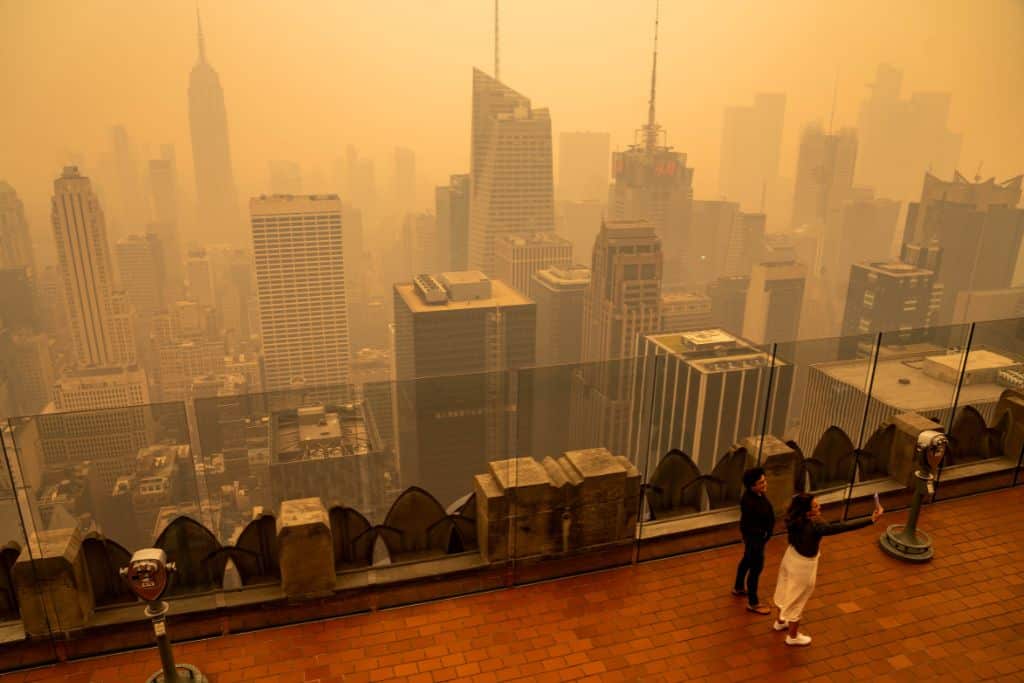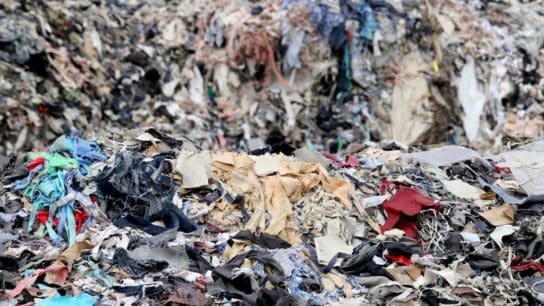“Extreme heat, drought and wildfires are contributing to worsening levels of air pollution across much of the US, exposing a growing proportion of the population to ozone and particle pollution that put their health at risk,” the American Lung Association said on Wednesday.
—
Nearly one in two Americans are living in places with unhealthy levels of air pollution, a new report monitoring air quality in US states and cities has found.
Researchers at the American Lung Association analyzed ozone and particle pollution concentrations for the period 2021-2023. Both air pollutants have been linked to respiratory conditions like asthma, increased hospital admissions, heart and lung diseases, and increased mortality.
They concluded that 46% of Americans – some 156.1 million people – are living in places with unhealthy levels of ozone or particle pollution, nearly 25 million more compared to last year’s assessment.
The State of the Air 2025 study, published Wednesday, linked worsening air pollution levels to climate change.
Extreme heat and drought have increased the number of wildfires in the US and neighbouring countries, leading to more frequent wildfires. Smoke from wildfires is a significant source of unhealthy air pollutants, while the burning of plants and other organic materials generate particulate matter along with hundreds of toxic gases, such as nitrogen dioxide, volatile organic compounds, and carbon monoxide.
A major study published in November found that air pollution caused by wildfires is attributable to more than 1.5 million deaths a year globally. PM2.5, one of the most common and harmful components of air pollution, was linked to 77.6% of all deaths from fire-related pollution; ozone accounted for 22.4%.
High temperatures combined with emissions also create ideal conditions for ozone formation, according to the study.
One Bad Fire Season Can Offset Progress
The American Lung Association was able to establish “a clear link” between wildfires and air pollution with data from 2023. That year, Canada experienced a record-breaking fire season that contributed 23% of the global wildfire carbon emissions for the year.
Heavy smoke from the wildfires quickly drifted south, blanketing Upper Midwest and Northeast states in a thick, orange haze and prompting local authorities to issue air pollution warnings for more than 98 million people across the Northeast, Midwest, and mid-Atlantic.

“Years of successful cleanup of emissions from transportation, energy generation and industrial processes have contributed to falling ozone levels across much of the country since the first ‘State of the Air’ report was published in 2000. Unfortunately, as was shown in 2023, one bad fire season has the potential to offset that progress, at least temporarily,” the American Lung Association said.
Climate change has increased the wildfire season by roughly two weeks on average globally, mostly by enhancing the availability of fuel through heat and dry conditions. The average wildfire season in Western US is now 105 days longer, burns six times as many acres, and sees three times as many large fires – fires that burn more than 1,000 acres compared to the 1970s, according to Climate Central.
Fire-Prone Los Angeles Tops the Ranking
Five of the 10 most polluted cities by ozone were in California, with Los Angeles-Long Beach topping the ranking. But the report also said that none of the cities on the list reported a worst-ever average number of days of ozone smoke, and four Californian cities had their lowest-ever number of unhealthy days for ozone.
Researchers also found that people of color are disproportionately exposed to unhealthy air, accounting for 50.2% of all Americans living in a county with at least one failing grade for either unhealthy levels of ozone or particle pollution. Meanwhile, Hispanic individuals are nearly three times as likely as white individuals to live in a community with three failing grades.
The new findings come as the Trump administration moves to cut the Environmental Protection Agency’s spending and roll back rules governing air quality standards.
Featured image: Wikimedia Commons.
More on the topic: All But 7 Countries Faced Unsafe Air Pollution Levels in 2024: Report
This story is funded by readers like you
Our non-profit newsroom provides climate coverage free of charge and advertising. Your one-off or monthly donations play a crucial role in supporting our operations, expanding our reach, and maintaining our editorial independence.
About EO | Mission Statement | Impact & Reach | Write for us








